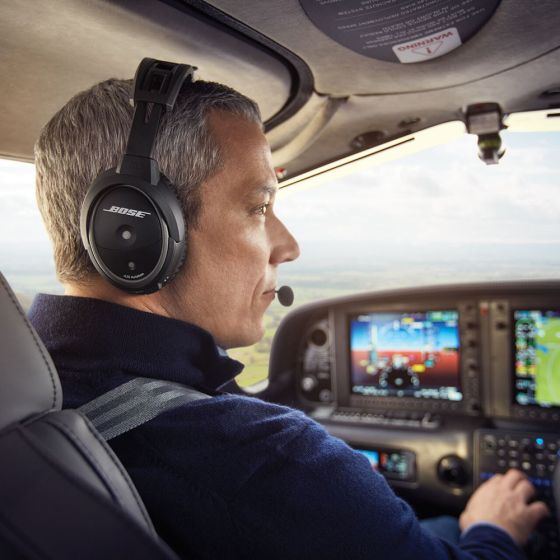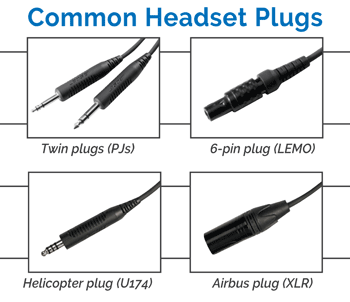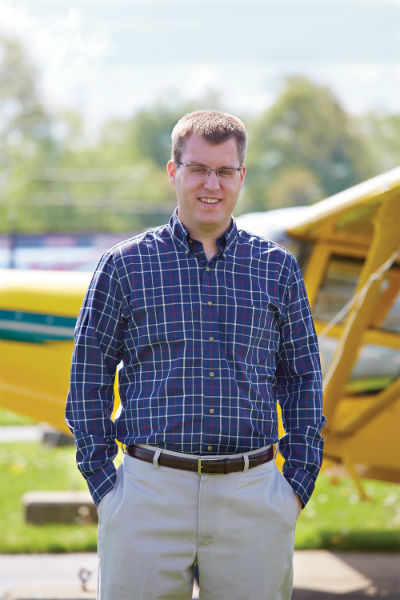Bose A20 Aviation Headset with Bluetooth
Limited quantity available.
Free Shipping!

In stock
Backordered
Bose has set the standard in aviation headsets for over 20 years, with innovative noise reduction technology and unmatched comfort features. At just 12 oz., the A20 is one of the lightest headsets on the market; combine that with its soft sheepskin on headpad and minimal clamping force and you can wear this headset all day. Bose's proprietary active noise reduction cancels an impressive amount of engine and propeller noise, but maintains outstanding battery life. The fully-adjustable microphone can be connected to either earcup and set in a range of stable positions for optimal communications. The Bose A20 is certified to FAA TSO-C139 and EASA ETSO-C139 standards and comes with a 5-year warranty.
10 reasons the Bose A20 is the #1 headset in aviation
- ANR pioneers. Bose was the first company to introduce active noise reduction headsets (over 20 years ago) and they’ve been innovating ever since. The A20 offers 30% greater noise reduction than conventional aviation headsets.
- A focus on comfort. A quiet headset isn’t enough these days – it has to be comfortable too. The A20 has numerous features that make it the most comfortable headset we’ve worn, including light weight, soft sheepskin cushions and a unique torsion spring that reduces clamping force.
- Famous Bose audio. Pilots rave about the Bose's Active EQ, which delivers crystal clear audio and rich sound when listening to music.
- Bluetooth phone interface. It’s easy to call Flight Service or update family members with this wireless connection that makes use of the A20’s noise cancellation.
- Bluetooth audio interface. Wirelessly connect your Bluetooth-enabled device to the Bose A20 to listen to music, and notifications from apps. Also available is the option to plug in your device with an aux input cord. Passengers love this feature.
- Smart audio muting. A handy switch on the A20 control box allows you to choose what auxiliary audio you hear, including automatic muting of aux audio when the intercom is active. You're always in control.
- Lightweight design. At just 12 oz., you’ll hardly know the A20 is there. The magnesium headband also distributes the headset’s weight evenly, for all-day comfort.
- TSO'd. The A20 meets or exceeds all TSO standards (FAA TSO-C139 and EASA ETSO-C139), so you can count on this headset for years of service, even in airline cockpits. They are built to last.
- Great service. If your Bose headset ever needs service, you can expect fast and friendly service, even years after your purchase. Includes a 5-year transferable warranty.
- Excellent battery life. Bose’s smart shutoff helps provide at least 45 hours of use from just two AA alkaline batteries, the best we've seen.
Staff PIREP
"The Bose A20 is popular for a reason – it strikes a good balance between comfort, quiet and clarity. It's comfortable enough to wear all day and it's quiet enough for almost any type of airplane. It may not be the cheapest headset, but you get what you pay for with Bose."
Plus: Most comfortable headset I've worn
Plus: Excellent ANR, with no hissing sound
Plus: Great battery life
Minus: Top-end price requires a big upfront investment
- John Zimmerman
ATP, Helicopter
President, Sporty's
Sporty's Test Flight Guarantee
Take your new headset flying and make sure it's the right choice for you. If you're not thrilled, return the headset to us within 60 days and in the same condition in which you received it - we'll exchange it for another headset or refund your money. There's no paperwork and no hassle. Just another reason why Sporty's is the #1 headset dealer in aviation.
Which cable do I need?
Most headsets come in multiple cable configurations. Choosing the right one is pretty easy, it just depends on what type of aircraft you fly:
- Battery powered, twin plugs - this is by far the most common style, with separate microphone and headphone plugs (so-called PJ plugs). Almost every airplane ever built has these two plugs in the panel, so these headsets are universal. The only downside is that, for ANR headsets, you will need to use AA batteries to power the headset.
- Aircraft powered, 6-pin plug - the second most popular style, sometimes called the "LEMO plug," requires no batteries since it is powered by the panel. This is convenient, but it does require the 6-pin plug to be installed in the panel. While many newer airplanes come with this option, most older airplanes do not. For these applications, you'll need to have your avionics shop wire in the plug - not a big job, but not something pilots can do on their own.
- Helicopter plug - helicopters use a single, shorter plug (that is not compatible with airplanes). This is not like the 6-pin plug above, however, since an ANR helicopter headset will still need AA batteries. The only confusing part is that some helicopters also have a 6-pin (or LEMO) plug. In these helicopters, there are two different single plug connections.
- Airbus XLR plug - less common is a single 5-pin connector that is made for Airbus jets.
 When in doubt, we recommend buying the battery powered, twin plug model. This is the most universal option, and will work in almost any airplane. If you have a 6-pin plug in your airplane or you plan to install one, the aircraft powered model is a nice option.
When in doubt, we recommend buying the battery powered, twin plug model. This is the most universal option, and will work in almost any airplane. If you have a 6-pin plug in your airplane or you plan to install one, the aircraft powered model is a nice option.
Please allow up to six weeks for delivery of military plug.
From the Press
"I expected it to be good. I just didn't expect it to be this good."
—Flying Magazine







